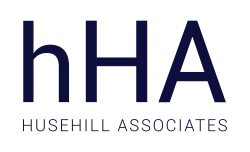
Isn’t it a great feeling when you’re heading home from a good day at work? The air seems fresher and the day seems brighter. There’s a positive spring in your step.
But why are those days so rare?
We all have to breathe to supply oxygen to our bodies. Similarly we need to work to earn money to live. Whether we work for salary, wages or are self-employed, we all have masters who want us to be more productive and deliver results.
It’s easy to get stuck in a vicious cycle. When we improve our productivity and deliver more, our masters want more, and it gets to the point where we are fully stretched and can’t improve our ability to deliver more… or can we?
Yes, we can add an edge to improving our productivity – let me introduce you to the key elements that influence our ability to deliver more – sustainably.
Every organisation employs people within different functions of the business: sales, production, administration, etc. Sadly, the job description for your role may not reflect what you do. This is because the person in Human Resources who wrote your job description has never worked in your role, so it’s a reflection of their understanding of what you do.
It’s a good idea to write your own job description, as this will help you to understand what you do within your role, and how to priorities your actions that impact on the key business outcomes of your organisation.
Harvard University’s Balanced Scorecard “Key Results Areas” identifies an organisation’s key business outcomes, and you can use them as the headings when writing your own job description. I have written a chapter on how to write your job description in my book: Revolutionise the way you work.
Even though you have a clear understanding of your job description, and know what you should be working on, why do you have an ongoing mental conflict between what you should be working on versus what you want to be working on? The conative part of your mind creates the desire for what you want to work on, which then creates your enhanced job satisfaction when you get to do it.
To find out what drives you, visit the Husehill.co.nz and we will help you create your natural working style profile. This profile report will help you understand how well you are driven to use or avoid four key drives: information, tactile, process and improvise. In my book, I have a whole chapter on how to enhance your job satisfaction.
Once you have worked out how your natural working style fits with your organisation’s key business outcomes, you can identify how to better manage the conflict between what you want to do and what you need to work on. From here, it’s a matter of being efficient with your time, setting your tasks, effective communication and working with people and opportunities. This is where mastering Microsoft Outlook comes into its own. It contains hidden treasures that, once you know what they are, will revolutionise your day.
By making the most of Microsoft Outlook, you can manage your time, your “to do” list, and your relationships and opportunities effectively. There are several chapters in my book dedicated to unveiling the full capability of Microsoft Outlook.
As Henry Ford said: “if you keep doing what you’ve always done, you’ll always get what you always got”. Take your life in your hands and revolutionise the way you work to create a better outcome, and make those good days a regular occurrence. At Huse Hill, we’re here to help.
